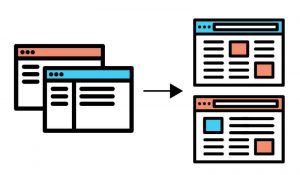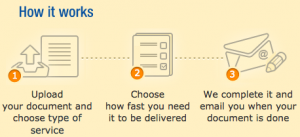Industries may be different in many ways, but the expectations of customers are the same. Customers want a seamless and easy digital experience with great service levels and delivery. In the realm of pricing, the same rules apply.

Habitat_de_lill / Pixabay
In my field of expertise, pricing and quote to cash, I get the opportunity to work with industries across the world, from B2B to B2C. I may be focused on a specific problem around price optimization, CPQ, quote rebates, or others, but perhaps the most interesting part about it is that I get to see pricing implemented with very different companies. What I have found in the last 20 years of focus in this arena, is that oftentimes learnings from one industry can be used in a completely different industry.
This holistic view is paramount to understand where there are pricing opportunities that can significantly improve your bottom line. For example, the dynamic pricing capability we developed for digital commerce is now being used in process industries to drive index and formula pricing in a much more rapid and streamlined way than it had ever been done before.
In a recent conversation with a smart and seasoned partner at Bain & Company, we found that our field work with a spectrum of industries has given us the knowledge that can drive toward innovation. These strategies also have been used to optimize our practices to meet customer expectations.
These are valuable insights for so many in the organization, including if you’re not on the pricing team but your role is somehow affected by pricing. Any executive, or sales and marketing guru, would find value in some the takeaways. Here are two smart ways to start.
Get field feedback: focus on the customer
Experience from the real world is the greatest opportunity to learn. Innovation in any industry comes from seeing how practices are put into place, and where there are opportunities to improve them. Whether it’s with your own customers, or when other solutions are being used by others. Getting close to customers and sellers allows you to think on a greater scale and ask yourself, how does it really work, why, and how can it be improved?
Naturally, you are trying to solve the same problems in the field as others, in any industry. There’s a richness in the feedback that we receive through experience in the field. This is achieved with an understanding that everyone is working to solve toward the same problems in the field – not at the corporate level, or office. It’s important to get out there yourself, speaking directly with customers, or at least work very closely with those that are interacting with customers on a day-to-day basis. Really integrate yourself and your team to work alongside the customer success teams in order to develop that proof of concept to scale.
At this point, it’s about refining and iterating, based on what you’re finding what works, and doesn’t work alongside each other. Over time, the end product will be teams that work together for a solution that works best for the company. The end result can be seen with confidence because it has their input and design and feedback incorporated into the solution. When it hits the field for everyone else, you can find confidence in knowing that it works because you’ve been with the field and sales teams, to make sure that the solution will be accepted and add value to them.
Get leadership buy-in to support collaboration
Cross-functional collaboration is key in pushing change at any organization. Companies can and should foster more collaboration and trust between teams. It sounds obvious but sometimes collaboration can be treated more as a theory than actual practice.
Putting that field work into place could be all for naught if leadership hasn’t fully bought in. One way to do this is to help leadership understand that this is beneficial for the entire organization, not just one team. For example, when implementing pricing software solutions, leadership needs to buy into the commercial organization to drive it, but also understand that it’s not just pricing that we’re trying to improve. Our goals are to make the commercial team better by prioritizing some of their requirements in addition to what we’re trying to do from a pricing perspective, and can improve sales velocity in a major way.
We not only encourage commercial teams’ blessing, we also value their feedback on aspects of our jobs such as pricing and quoting, which can be a pain for them. Making this process more efficient and more effective can be achieved by providing guidance to them in a way they can digest and understand fully.
Work pricing out in alliance with other teams and get full buy in. Figure out what information they need to be confident and defend the price to the customer. How can sales push a price they don’t believe in? Other teams can give you a perspective you may not see, such as competitor and peer pricing, or how sales is selling products and services.
In the end, it’s the customer who feels the pain if these processes are not put in place. The customer expectation is that you’re doing your best to give them the best product and service at the price that is fair. If you do not do the dirty but essential job of field work, and earn buy in from teams that matter, including leadership, you will take too long to get quotes and prices to customers, and may lose your competitive edge as a result.
Business & Finance Articles on Business 2 Community
(31)





